|
It’s time for Louisiana to join the flat tax revolution. Four states passed a flat personal income tax this year after only four did over the 100 years, bringing the total to 14 states that have or will soon have flat income taxes.
Flattening income taxes provides more opportunities for people to flourish, but eliminating them is best to provide even more prosperity and individual liberty to keep the fruits of your labor. These tax reforms start with spending restraint. Economic data show that the nine states without a personal income tax outperform, on average, the nine states with flat income taxes in economic growth, domestic migration, and non-farm payroll employment over the last decade. Georgia (2024), Idaho (2023), Iowa (2026), and Mississippi (2023) passed flat-income taxes this year. Arizona is set to have a flat income tax in 2023 at 2.5%, which will be the lowest rate in the nation. Through those reforms, these states will have more opportunities to improve the number of well-paid jobs, sectoral growth, and other benefits that advance thriving communities. This contrasts with progressive personal income taxes that disincentivize people from working and living in those states. This is happening in California, where even its wealthy citizens are leaving as personal income taxes soar, and it’s likely to get worse as the top marginal tax rate rises to 14.4% in 2024. Progressive, high-income tax structures produce undesirable outcomes, and states should work toward eliminating personal income taxes. Of course, other taxes and policies matter. Louisiana took a great step in the right direction by dropping our progressive rates and putting in revenue triggers that will lower them further over time. Yet flattening them to one rate would be the best next step. According to the Tax Foundation’s recent report, states without a personal income tax or lower tax burdens overall rank the highest in business tax climate, with Wyoming (1st), South Dakota (2nd), Alaska (3rd), and Florida (4th) leading the way. And those states with the highest personal income rates perform worst, with California (48th), New York (49th), and New Jersey (50th) being last. Louisiana ranks 39th, its best ranking since 2017, after improving three spots from the recent tax reforms. But the state remains near the back of the pack, which could be improved by continuing to cut away at the personal income tax. What would help fund limited government spending with an improved tax system? The increased economic activity from an improved tax system will help increase tax revenue collections, as the state would move more towards a consumption-based tax system. The least burdensome form of taxation tends to be a flat final sales tax with the broadest base and lowest rate possible. Taxing consumption results in less consumption but more savings, which can support greater capital accumulation and economic growth. The ultimate burden of government is how much it spends. Jonathan Williams, who is a co-author of the ALEC report on economic performance by states, recently said, “There are nine states with no income taxes, and they spend substantially less per capita than states with an income tax.” Given major headwinds from D.C., it’s time for Louisiana to join the flat tax revolution by strengthening the state spending limit and flattening its personal income taxes until ultimately eliminating them. Originally published Pelican Institute
0 Comments
Many cities across the nation are facing a fiscal crisis. While pandemic-related problems that were self-induced or otherwise play a part, many of these issues have plagued cities for a long time. A serious cultural shift concerning finances among local governments is critical if people want to flourish in cities.
I recently interviewed Mark Moses who is a municipal government expert and author of the recently published book The Municipal Financial Crisis: A Framework for Understanding and Fixing Government Budgeting. He contends that “many local governments are on track for bankruptcy.” And this downward trajectory can be expected to continue as municipalities fail to restrain their spending and overreach, crowding out opportunities for the private sector to work. We’re seeing this play out in places like New York City, where city-funded expenses have been asked to be cut by 3% and on track to be slashed more in response to their recently reported $10 billion deficit. Moses says that “there’s a lack of economic understanding in lots of municipalities.” This absence of understanding often results in collecting more taxes to fund more “solutions” as a band-aid to the broken system and struggling local finances. As he puts it, “local governments give up trying to balance budget sheets.” But failing to assess and address the tangled economic approach that’s led them to a place where more taxes and regulations seem like the only answer leads to long-term issues and a path that’s difficult to leave. Local governments must limit their scope and focus on core issues. That means letting new initiatives and departments take a back seat while they get spending under control. This is difficult, however, especially after the 2021 American Rescue Plan Act that gave $45.6 billion to municipalities, which temporarily and artificially inflated local finances. More money under lousy management is a weak fix. And now, with rising inflation and energy costs, these municipalities are ill-equipped to thrive in a recession that wasn’t helped by the huge bailout package. A good start to overcoming these challenges would be to get government out of the way in most cases so that the the private sector can solve key issues, which has proven to be the best antidote for most problems throughout history. Overinflating their role instead of sticking to limited governing, such as property rights and a few public goods, is a trap that many cities fall into and that comes at a huge cost. But philanthropic and other private-led solutions tend to be crowded out through higher taxes and regulations when city hall makes promises they can’t fulfill. Moses describes this as municipalities “seeing themselves as an end to themselves,” which is why many local governments resist spending limits or find ways around them. This is an ongoing issue in Texas which is contributing to an affordability crisis. Texas is blessed to have constitutional amendments against state-controlled personal income taxes or property taxes, so all property taxes are local in Texas. While there have been attempts recently by the state to limit their growth, property taxes have increased by 169% in the past 20 years compared with an increase of 104% in the rate of population growth plus inflation. This indicates that property taxes are growing well above the average taxpayer’s ability to pay for them. Some argue that Texas has high property taxes because it has no personal income taxes. But the reality is that it is really from excessive local government spending. For example, Texas has the 6th most burdensome residential property tax according to the Tax Foundation but other states without a personal income tax like Florida and Tennessee rank 26th and 36th, respectively. This is because the latter two states do a better job restraining spending. The best way to get budgets and taxes back on a fiscally conservative track is through a strict spending limit that covers the entire budget and grows no more than the rate of population growth plus inflation. This would help cities, and all local governments, stick to just addressing what’s in their purview. A city’s scope shouldn’t be evaluated from one council meeting to the next but should be assessed in the long term if its local government hopes to see future success and a prosperous economy. The same principles of economic success apply to all government institutions; people flourish where liberty is preserved, and that’s best achieved under limited government whereby politicians’ interventions remain inside their limited scope so that free markets and free people can innovate and thrive. Just as we’re witnessing with this recession, there’s always a trade-off to overspending and unbalanced budgets. The sooner local governments realize that and reel in their spending, which is the ultimate burden of government, the sooner financial crises will be averted. Originally published at EconLib Key Point: Texas recently leads the way in job creation and economic growth but there’s more to do to help struggling Texans deal with the state’s affordability crisis, especially freezing government spending and moving further to sales taxes. Overview: Texas has been a national leader in the economic recovery since the inappropriate social and economic shutdowns that caused a severe recession in Spring 2020. This includes reaching a new record high in total nonfarm employment for the 12th straight month, leading exports of technology products for 20 consecutive years, and being home to 54 of the Fortune 500 companies. While the 87th Texas Legislature in 2021 supported the recovery by passing many pro-growth policies like the nation’s strongest state spending limit, there’s more to do in 2023 to remove barriers placed by state and local governments. Solutions include governments passing responsible budgets and returning surplus tax dollars collected to taxpayers by reducing property taxes until they’re eliminated. Other states are cutting, flattening, and phasing out taxes, so Texas must make bold reforms to support more opportunities to let people prosper, mitigate the affordability crisis, and withstand destructive policies out of D.C. Labor Market: The best path to prosperity is a job, as it helps bring financial self-sufficiency, dignity, hope, and purpose to people so they can earn a living, gain skills, and build social capital. The table below shows the state’s labor market for October 2022. The payroll survey shows that net nonfarm jobs in Texas increased by 49,500 last month, resulting in increases for 29 of the last 30 months bring record-high employment to 13.6 million. Compared with a year ago, total employment was up by 694,200 (+5.4%), which was the fastest growth rate in the nation, with the private sector adding 670,200 jobs (+6.1%) and the government adding 24,000 jobs (+1.2%). The household survey shows that the labor force participation rate is slightly higher than it was in February 2020 but below June 2009 at the trough of the Great Recession. The employment-population ratio is nearly back to where it was in February 2020, and the private sector now employs 600,000 more people. Texans still face challenges with a worse unemployment rate, though historically low, and nonfarm private jobs just recently above its pre-shutdown trend (Figure 1). Figure 1 compares the ratio of current private employment to pre-shutdown forecast levels in red states and blue states if both chambers of the legislature and the governor are Republican (dark red), Democrat (dark blue), or some combination (lighter colors). The results show a clear distinction between red states and blue states, with the stringency of restrictions by governments during the pandemic along with pro-growth policies before and after the shutdowns playing key roles. Specifically, 22 of the 25 states with the best (highest) ratios are in red-ish states while 13 of the 15 states and D.C. with the worst (lowest) ratios are in blue-ish places. Figure 1 Figure 1 is informative because only Republican governors, with the exception of Louisiana, ended the supplemental unemployment payments that contributed to some people receiving more than while working before the payments expired. These data indicate a strong relationship between sound policy and more job creation. Overall, multiple indicators should be considered as the unemployment rate is a rather weak signal of the labor market. While the labor force participation rate in Texas exceeds where it was before the shutdowns, and the 4.0% unemployment rate could be full employment, the employment-population ratio is 0.2-percentage point above the pre-shutdown ratio. Economic Growth: The U.S. Bureau of Economic Analysis (BEA) provided the real gross domestic product (GDP) by state for Q2:2022. Texas had the fastest GDP growth of +1.8%—to $1.85 trillion—on an annualized basis (above the -2.6% U.S. average). These followed Texas’ GDP growth declines of -7.0% in Q1:2020 and -28.5% in Q2 during the depths of the recession. GDP rebounded in Q3 and Q4, yet declined overall in 2020 by -2.9% (less than -3.4% decline of U.S. average) but increased by +3.9% in 2021 (below the +5.9% U.S. average). The BEA also reported that personal income in Texas grew at an annualized pace of +9.3% in Q2:2022 (ranked 3rd best and above the +5.8% U.S. average) as job creation and inflated income measures found their way across the economy.
Bottom Line: As Texas recovers from the shutdown recession and faces an uncertain future with the U.S. economy having stagflation and a likely recession, Texans need substantial relief to help make ends meet. While the Texas Model was strengthened by the 87th Legislature last year from less government spending, taxing, and regulating, more is needed for limiting government at the state and local levels. Recommendations: In 2023, the Texas Legislature should improve upon its past efforts by:
Key Point: Louisiana’s labor market looks okay on the surface but the labor force is 16,613 (-0.8%) below the COVID-related shutdown in February 2020 and private sector employment is 35,900 (-2.3%) below then. Labor Market: A job is the best path to prosperity as work brings dignity, hope, and purpose to people through life-long benefits of earning a living, gaining skills, and building social capital. The table below shows Louisiana’s labor market over time according to the U.S. business cycle until the latest data for October 2022 by the U.S. Bureau of Labor Statistics. Data compare the following: 1) June 2009—Dated trough of that U.S. recession, 2) February 2020—Dated peak of the last U.S. expansion, 3) April 2020—Dated trough of the last U.S. recession, and 4) October 2022—Latest data available. The payroll survey shows that net total nonfarm jobs in the state decreased by 4,200 jobs last month, bringing this to 60,600 jobs below the pre-shutdown level in February 2020. Private sector employment was down by 3,000 jobs and government employment declined by 1,200 jobs last month. Compared with a year ago, total employment was up by 52,100 (+2.8%) with the private sector adding 52,700 jobs (+3.4%) and the government cutting 600 jobs (-0.2%). The household survey finds that the civilian labor force declined by 6,035 last month and is down 16,613 since February 2020, which results in the labor force participation rate of 58.3% being 0.3-percent point lower than it was in February 2020 but well below June 2009 at the trough of the Great Recession. The employment-population ratio is 1-percentage point above where it was in February 2020, and the private sector employs 38,900 (-2.3%) fewer people than then. While the unemployment rate of 3.3% is substantially lower than the 5.2% rate in February 2020, a broader look at Louisiana’s labor market rather than this weak indicator shows that Louisianans still face challenges, especially compared with neighboring states. Economic Growth: The U.S. Bureau of Economic Analysis (BEA) recently provided the real (inflation-adjusted) gross domestic product (GDP) for Louisiana and others states. The following table shows how U.S. and Louisiana economies performed since 2020. The steep declines were during the shutdowns in 2020 in response to the COVID-19 pandemic, which was when the labor market suffered most. The decline in real GDP annualized growth in Q2:2022 of 3% was the 5th worst in the nation. The BEA also reported that personal income in Louisiana grew at an annualized pace of 5.8% (19th best) in Q2:2022 (tied +5.8% U.S. average). Bottom Line: Louisianans lost jobs in October and continue to feel the effects of the shutdowns in 2020 as many policies are too restrictive to allow more economic growth and prosperity with well-paid jobs. The Fraser Institute recently ranked Louisiana 20th for economic freedom based on 2020 data for government spending, taxes, and labor market regulation. And the Tax Foundation recently ranked the Pelican State as having the 12th worst business tax climate. White the state has improved its tax code recently and lower taxes may happen soon from an expected budget surplus, this lack of economic freedom and poor business tax climate are contributing to a net outmigration of Louisianans to other states over time, which is a drain on the state’s economic potential now and in the future. State and local policymakers should work to reverse this trend by passing pro-growth policies.
Recommendations: In 2023, the Louisiana Legislature should provide the state’s comeback story by:
Louisiana has many of the right characteristics for families to flourish. This includes abundant natural resources and thriving petrochemical, oil and gas, and tourism sectors. In fact, New Orleans was recently ranked as the 9th fastest-growing city for 2022 by the American Growth Project. They note that the worker shortages in New Orleans “could indicate the city has even more room to grow in coming years.”
But there’s substantial room for improvement as people and businesses are leaving the state. A big part of that is because of the poor state business tax climate that the Tax Foundation recently ranked as the 12th worst in the country. If it’s too costly to run a business, then employers and workers will go elsewhere. This is especially true when it comes to personal income taxes. Louisiana should join the many states in the flat tax revolution to avoid the negative effects this tax has on people’s livelihoods. This year, four states passed a flat personal income tax, making a soon-to-be total of 14 flat income tax states across the nation. One of them is Louisiana’s neighbor, Mississippi, currently ranked 30th in business tax climate. With a flat income tax, Mississippi's status will improve, but not as much as it could if it also eliminated the personal income tax altogether. Even the improvement of flattening income taxes won't support as much prosperity as eliminating them. The nine states without personal income taxes, including nearby Texas and Florida, show better economic growth, domestic migration, and non-farm payroll employment when compared to flat-tax states. Uncoincidentally, Florida ranked 4th best and Texas 13th in business tax climate. High personal income taxes contribute to Louisiana’s northern neighbor, Arkansas, ranking 40th in business tax climate, and the progressive darlings of California and New York ranking 48th and 49th, respectively. Personal income taxes in the business tax climate index rank 25th in Louisiana, 37th in Arkansas, 49th in California, and 50th in New York. But the marks against Louisiana don't stop there. The latest edition of the Rich States, Poor States report from the American Legislative Exchange Council, which notes the economic performance of the 50 states based on economic output, migration, and job creation from 2010 to 2020, reveals that Louisiana ranks last. The report also compares the upcoming economic outlook for all the states across 15 policy variables, which put Louisiana at 20th, still behind Texas (11th) and Florida (8th), but above Mississippi (27th), although that will likely change in the next report given Mississippi's new flat tax policy. What continues to show up as a contributing factor for Louisiana's lackluster tax policies and economic performance, when compared to its neighboring states, is a hefty burden of personal income taxes. People are fleeing states with high personal income taxes for good reason. Progressive personal income taxes disincentivize work, as people's hard-earned money, that's already being devalued by the current 40-year high inflation, decreases even more. Naturally, people gravitate toward states where they can keep more of what they make. What's a state to do for funding once personal income taxes are eliminated? One poor answer to fund government spending is with higher property taxes. This is a weak spot to the overall tax system in some states without personal income taxes, like Texas, which are a result of excessive local government spending. The better answer that many no personal income tax states primarily depend on for funding is consumption-based taxes. A flat final sales tax with the broadest base and lowest rate possible is best. Although taxing consumption results in less consumption, the benefit is that people save more, which allows for more capital and economic growth. If Louisiana hopes to see more economic growth and thriving people in its state, like the recent growth in New Orleans, flattening personal income taxes should be a top priority until their ultimate elimination. Originally published at The Center Square Americans are facing a housing affordability crisis – and Texans are no exception.
Texas families struggle to make ends meet with high inflation, stagnating wages, and rising mortgage rates. Add high property taxes to the equation, and it is not difficult to see why 1-in-2 Texans reported that they were behind on rent or mortgage payments and that eviction or foreclosure in the next two months is likely. Property tax relief is needed more than ever to help homeowners, renters, and businesses during these challenging times. For this purpose, the Texas Public Policy Foundation proposes a way to cut local property taxes substantially next year, and cut them nearly in half over the next decade. In Texas, the housing market is cooling as there were three months of supply of homes for sale relative to demand in September 2022, which is the highest since May 2020 after a couple of years of a very tight housing market. This cooling of the housing market resulted from mortgage rates topping 7%, a 20-year high that dramatically raises borrowing costs and monthly payments. Another contributing factor to the affordability crisis in Texas is high and rising local property taxes. Texas is blessed to have constitutional bans against a personal income tax and a statewide property tax. But while Texas has a costly gross receipts-style tax called a franchise tax, which should be eliminated, the most burdensome taxes discussed during soccer practices or business events are local property taxes. These taxes have nearly tripled over the past 20 years. And it’s wrong to think that property taxes are high because there is no personal income tax, as other states like Florida and Tennessee have much lower property tax burdens. The problem is excessive local government spending that requires more taxes. Property taxes are regressive. The Texas Comptroller’s office estimates that the lowest 20% of income earners will pay 6.9% of their total income in property taxes compared with 1.9% for the highest income quintile in 2023. Moreover, the Tax Foundation ranks Texas 11th in property tax collections per capita, 6th for its burden on homeowners, and 13th most burdensome to businesses, which is ultimately passed to consumers. Consequently, property tax relief is a top priority to help relieve some of the housing affordability issues. Reducing property taxes for Texans would keep more money in their pockets to satisfy their desires during a rising affordability crisis. To do so, the Foundation proposes eliminating nearly half of total property taxes. The proposal uses state general revenue-related funds to replace the maintenance and operations (M&O) property taxes partially funding independent school districts (ISD), which is about $60 billion per biennium. Specifically, most, if not all, surplus general revenue-related funds, which the Legislature has the most control over, above the state’s new state spending limit based on the rate of population growth plus inflation would be used to replace the ISD M&O property taxes each period until they’re eliminated. We calculate that this could happen in a decade. We use the average two-year growth rates over the last decade from 2012 to 2021, given that the state has a biennial budget for general revenue-related funds of 9.3% and a rate of population growth and inflation of 6.7%. We then use a reasonable 90% of this 2.6-percentage points surplus each biennium and half of the latest 2022-23 surplus of $27 billion to find this is achievable while fully funding public schools based on the current state-determined school finance formulas. With a record $27 billion expected surplus and another $14 billion likely in the state’s rainy day fund, the state has plenty of taxpayer money to fund limited government provisions within the normal taxes collected while returning surplus money to Texans. This is a historic opportunity to provide substantial property tax relief and more opportunities for businesses to move to Texas without costly incentive deals. The result would be Texas having a more robust economy, more job creation, more investments, and more opportunities to prosper so that Texans can be more able to afford their desired livelihood. Originally published at The Center Square In a desperate attempt to garner public favor before the midterms, President Biden set his sights on a new target to distract Americans from the pressing inflation problem: overdraft fees. Those low-percentage charges issued by banks to customers who use more money than they have in their accounts are apparently dire.
Biden tweeted: “My Administration is making clear that charging Americans for a bounced check they deposit or an overdrafted bank account isn’t just wrong. It’s illegal.” In the official White House statement, he refers to these charges as “hidden fees,” discounting that bank account holders voluntarily sign off on the possibility of overdraft fees when they open an account. Unlike Biden, most people understand that what’s illegal is using someone else’s funds without permission, not issuing a penalty for doing so. Eliminating overdraft fees would disempower personal responsibility through government overreach and reduce the opportunity for some to open an account. Charges are a practical price for using an institution’s capital to support money mismanagement, and an underreaction, one could argue, to theft. As it turns out, nothing is free, including using the bank’s money when you’ve overspent yours. This is bad enough, as people have begun to think that scarce things are free, but Biden says he isn’t stopping at overdraft fees. He’s also going after what he’s branded as “surprise” fees, such as family seating fees issued by airlines, switch fees from internet and cable services, and service fees from concert and sporting venues. Notably, he claims that these charges are more menacing than typical add-on fees and that “firms should be free to charge more to add mushrooms to your pizza.” So, what’s more menacing about concert venues charging a service fee to cover operational costs than Pizza Hut charging for extra toppings so they can still turn a profit? There isn’t a difference. What’s malicious is that Biden wants to penalize businesses for trying to stay profitable in a recession that he’s prolongingby addressing “problems” like these instead of the 40-year high inflation that’s removing purchasing power from consumers and hurting families. Biden insists that these “junk fees” are undetectable by consumers and therefore unfair, and that this makes it impossible for people to compare the real costs between service providers. Those seeking to promote more government involvement in businesses,almost always undermine individual agency. The reality is that consumers can fight against fees, take their business elsewhere, or choose to pay them if they think it’s worth it. That’s what prices in a free-enterprise system of capitalism are all about: allowing people to improve their lives. There are always trade-offs in life, and if the Biden administration successfully removes all these fees, we can expect to see another kind of trade-off instituted in its place. Nothing scarce is free. Every decision we make gives up something else, which economists call opportunity costs. Politicians too often think they can ignore this fact, but they do so at the peril of the people whom they serve. This kind of overreach isn’t just insulting to Americans, it’s harmful to a free-market system that operates best with limited government. By convincing people that they’re powerless to manage their money or find the best service provider because they’re helpless against “big scary businesses,” the government creates enough public concern to justify stepping in where they have no business doing so. The economy is suffering enough under Biden’s overregulation, Congress’ overspending, and the Fed’s overprinting; the last thing it needs is another barrier to growth and organic competition. Biden can quit trying to kid the American public that overdraft fees, which make up less than one percent of annual household spending, are the culprit for this lackluster economy. Instead, he should scrap his failed policies and promote free-market solutions that let people prosper. Originally published at AIER |
Vance Ginn, Ph.D.
|
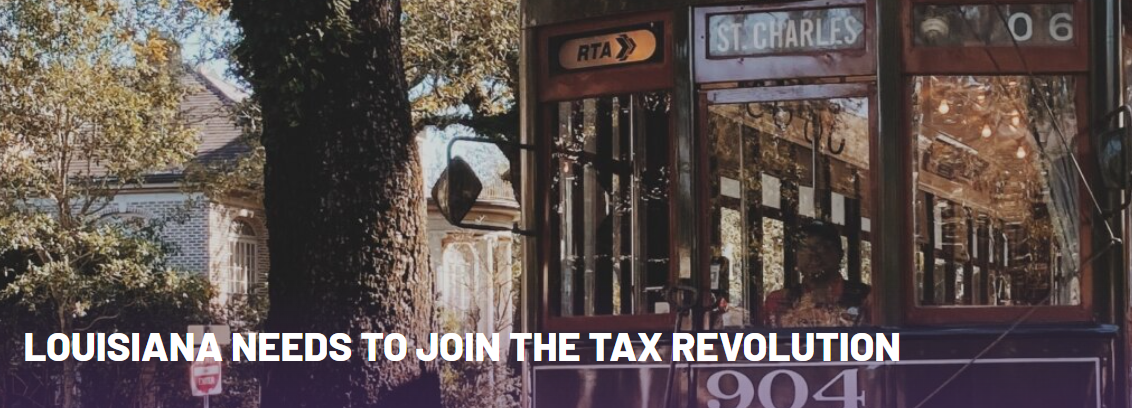


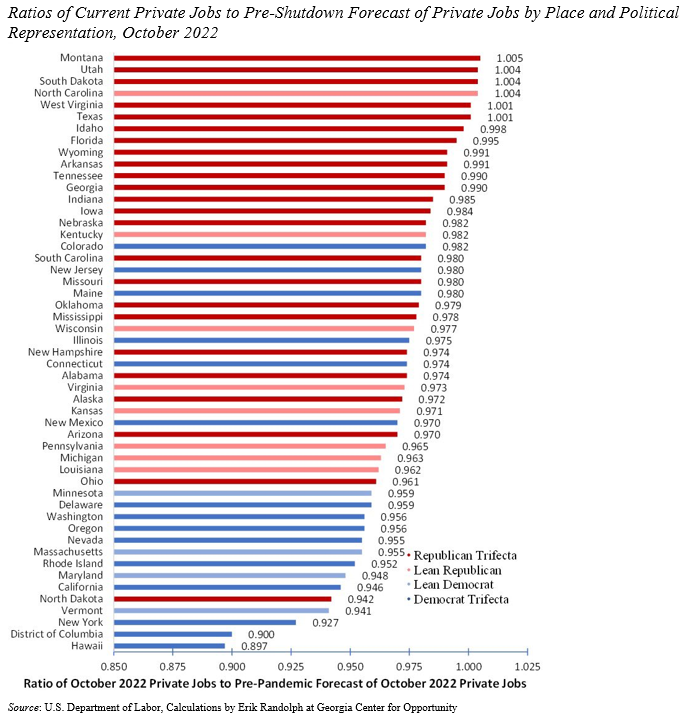
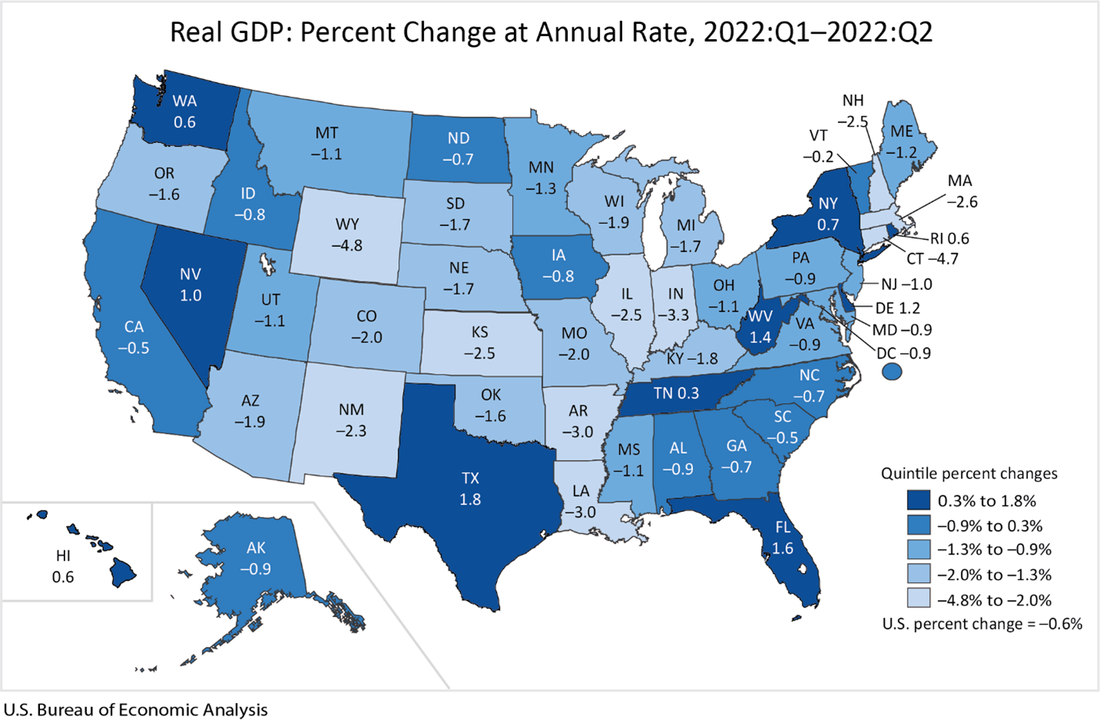
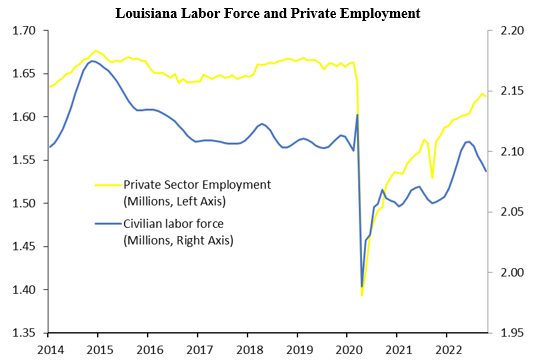




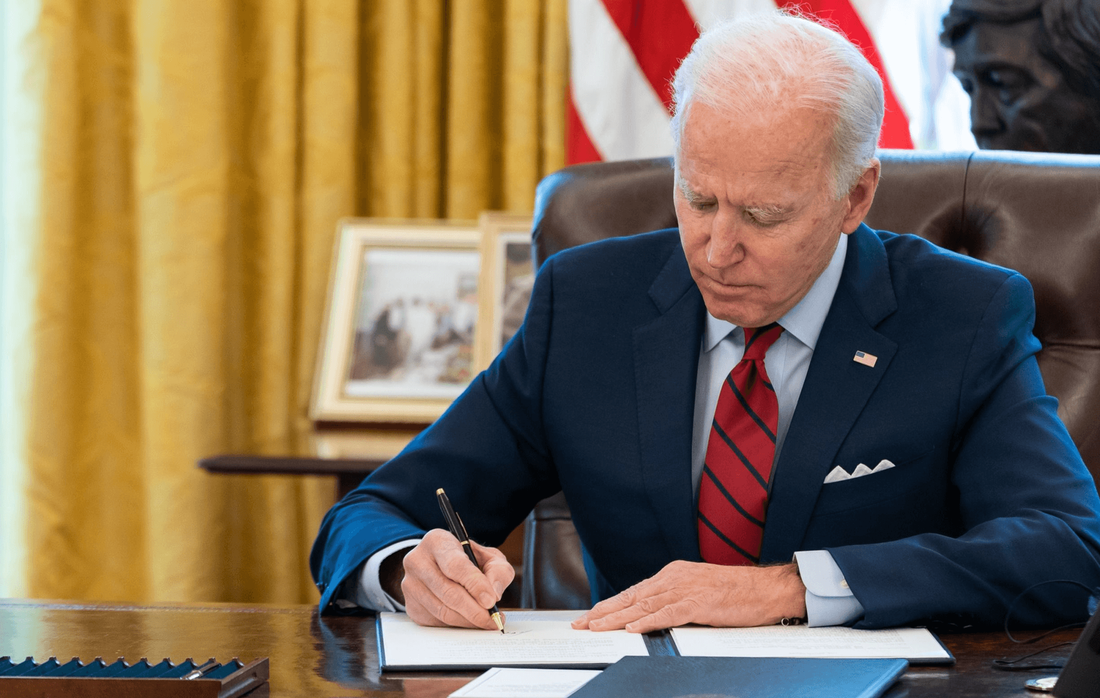

 RSS Feed
RSS Feed